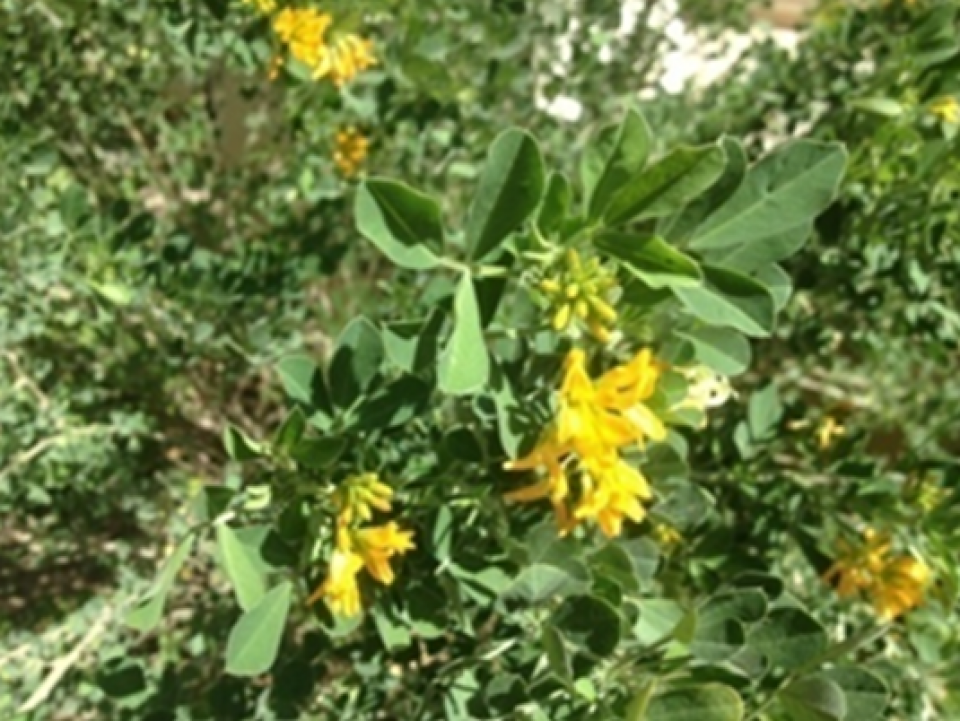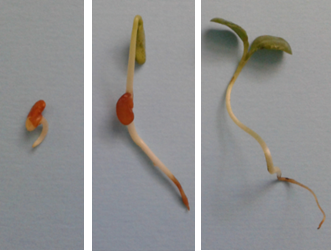
Medicago arborea, a naturalized species, was selected for its pastoral and high ecological interest: it is a nitrogen fixer and cold, drought, and salt-tolerant plant species (Sibole et al. 2003). It tolerates frost conditions and low temperatures as well as drought conditions and high temperatures. It’s an important species regarding its symbiosis with nitrogen fixation bacteria. The species had always demonstrated its importance as a forage species and its quality in feeding the animal. The main objective of this work is to master the techniques for multiplying and conserving this species.
M. arborea is a forage species very appreciated by cattle. It has good quality as it is too rich in nitrogen and proteins (nitrogen matter constitutes about 20% of its dry matter). Its digestibility is more important than many other forage species like Atriplex nummularia as well as d’Acacia cyanophylla. It has a great energetic value of 0.8 UF to 1.05 UF /kg of dry matter. This work was part of the ECOPLANTMED Project (www.ecoplantmed.eu)
The seeds of M. arborea are disinfected using an 8% Sodium hypochlorite solution for 10 minutes. The seeds are placed to germinate in Petri dishes, with sterilized filter paper. Using boiled water to leave seeds dormancy was the best treatment used in our experience whish increased seeds germination rate to above 60%. The best germination temperatures were comprised between 18°C and 25°C. The temperature has averted as the most important abiotic factor in the M. arborea conservation and propagation. Multiplication tests were carried out in a greenhouse in the nursery of INRGREF, which gave success results greater than 80%.
The protection, germination, and propagation of M. arborea species are an important action, and this work helps us understand this aspect. So, we recommend:
- Collect mature seeds and clean them very well. The cleaning was done by hands then the seeds were separated by a sieve.
- Dry the seeds and conserve them in low-temperature conditions between 4-6°C.
- Sterilize the seeds and put them in a solution of 8% hypochlorite de sodium for 10 min.
- Clean seeds using sterilized water.
- Put 25 seeds in a petri dish between 2 filter paper and add sterilized water to them
- Make sure that the water doesn’t dry out
Transplant the germinating seeds into a mix of peat and sand and put them in a 25°C temperature.
The importance of this work lies in finding the most appropriate actions and steps followed to increase the germination and propagation rate of the species. The tests followed a scientific protocol regarding the number of plots tested. However, a test of the response of different provenances should have been held. Also, transplanting the obtained plants in natural conditions will help to get a global idea about their adaptability in farms and shrubs.
The results that we have obtained and the protocol used in our work are an important step in the way of developing the situation of the species and optimizing its role in agriculture and farming. Meanwhile, this work could be more developed regarding the choice of the provenances, the amelioration of the ways of collecting and cleaning seeds, testing the produced plants in natural conditions to observe their adaptability rate and apply a process to increase the genetic diversity of the species.
Issam Touhami, issam_touhami@yahoo.fr, www.inrgref.agrinet.tn
Salma Sai-Kachout, salmasey@yahoo.fr, www.inrat.agrinet.tn
Hamdi Aouinti, hamdiiouinti@gmail.com, www.inat.tn
Abdelhamid Khaldi, khalditn@yahoo.fr, www.inrgref.agrinet.tn
Further information
Le Houérou H.N. 2002. Multipurpose germplasm of fodder shrubs and trees for the rehabilitation of arid and semiarid land in the Mediterranean isoclimatic zone. Options Méditerranéennes, 37:1-118.
Sibole J.V., Cabot C., Poschenrieder C. & Barcelo J., 2003. Ion allocation in two different salt-tolerant Mediterranean Medicago species. J Plant Physiol. 160: 1361-1365.
Salma Sai

Salma Sai
